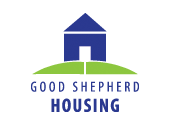The Gap in Affordable Housing
by David Levine, President/CEO
An affordable housing advocacy for over forty years, the National Low Income Housing Coalition (NLIHC) has been tracking the gap between the supply and demand for affordable housing units nationwide for many of those years.
In its 2018 “The Gap: A Shortage of Affordable Housing” report, NLIHC details a shortage of more than 7.2 million rental homes “affordable and available to extremely low income renter households.” That translates into only 35 affordable rental homes for every 100 extremely low income renter households.
While the need for affordable rental housing is great for the extremely low income households — those households with annual earnings below 30 percent of the Area Median Income (AMI) — they are really not our target population. For GSH, the majority of our working residents have annual households earnings between 30 and 50 percent of the AMI. NLIHC calls this cohort between 30 and 50 percent of the AMI the “very low income renter households.”
For our target population of very low income renter households, NLIHC reports that only 56 affordable rental homes are available for every 100 very low income renter households. NLIHC also details that, for our target population of very low income households, an estimated 2.1 million of them had “severe cost burdens,” meaning more than 50% of their household income went to housing costs.
More telling is the finding that an estimated 14.1% of these households with “severe cost burdens” were unable to pay all or part of their rent in the last three months. That failure to pay rent may lead to a possible eviction. In other words, cost burdens will lead to housing instability, evictions, and an episode of homelessness.
By providing very affordable rental units, GSH can help with this rental cost burden for so many households. At the same time, GSH also makes sure that we don’t put any household into our housing that will be rent cost burdened.
As the NLIHC report shows, a severe rent or housing cost burden can precipitate even more housing instability. It will result in poor housing outcomes.
At GSH, it is what we do not want for the many households living in our housing.
